biscuit or cookie
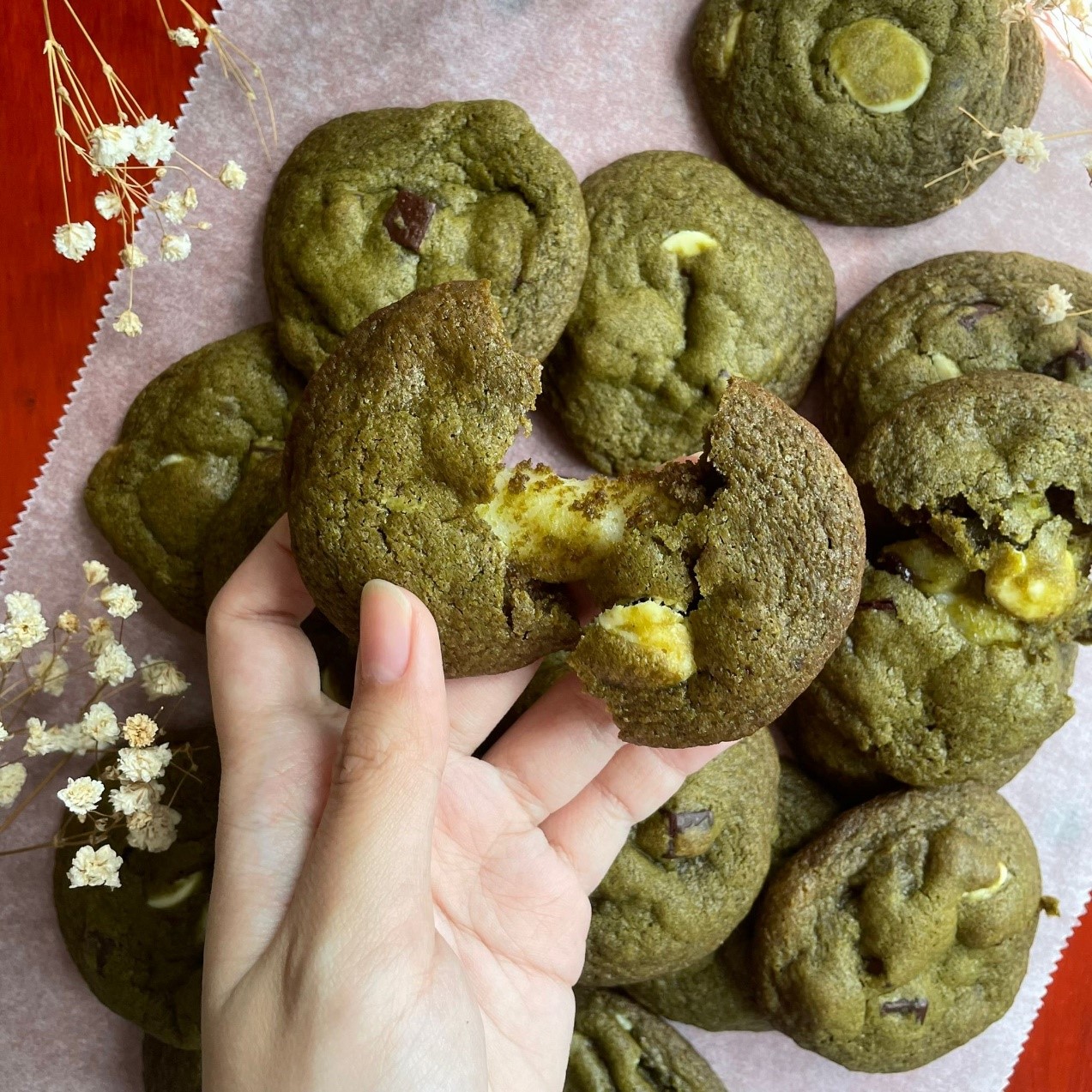
biscuit or cookie
I struggle to know when do I call a biscuit a cookie or a cookie a biscuit.
I grew up with biscuits. Cookie only came later when my kids were in their teens and brought this vocabulary home.
Biscuit was a rare commodity when we were young. We only get to eat Jacob “sor-ta-peang” aka cream crackers dipped into Milo when we were sick. It was somewhat an incentive and motivation for us to take our medication and get well. I don’t recall knowing any other types of biscuits until many years later.

Plain and sugar “sor ta peang” aka cream crackers
Up to this day, my family and I would instinctively reach out for cream crackers whenever we do not feel well. Even hospitals serve cream crackers as a snack for tea to their patients. Whoever invented cream crackers has certainly done an excellent job in marketing this biscuit which has withstood the onslaught of other biscuits and cookies in the market.
This humble cream crackers have also found its way to café, usually served with butter, kaya (coconut jam) or peanut butter. When I was travelling on long haul flights for work, I would request for cream crackers and have it with cheese just so that it matches the travel class I was in. It served as comfort food when I was sick of the frequent airlines’ food.
There are now more variety like the sugar-coated ones which is my son’s and my favorite, and brands to choose from.
It was always a happy occasion when our “Biscuit Uncle” who was my late dad’s cousin come riding on his motorbike to our home with samples of biscuits, usually near Chinese New Year. The aromatic smell of freshly baked biscuits would fill the living room as we try out the biscuits made by his wife to supplement their household income. My top choices were the cereal, orange and cherry biscuits. I always waited in trepidation as there were nine of us in the family and my choice was not always heard. Fortunately, these three flavors were also our family’s top choices and his best seller.
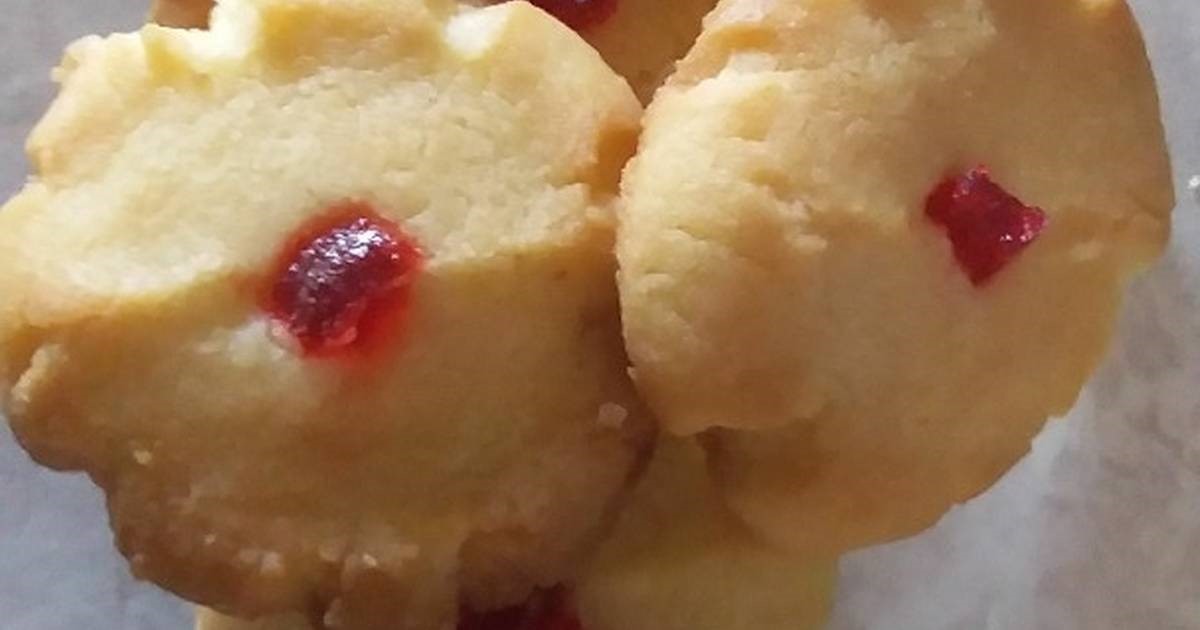
Photo of this cherry biscuit looks closest to my Biscuit Uncle’s cherry biscuit
(Photo Credit: Onthatile Kabelano on cookpad.com)
After I left home to further my studies in Singapore, I hardly had a chance to eat his biscuits but the taste of his biscuits continues to linger in my mind and no other similar biscuits could rival his. I had made a few attempts to trace my uncle to check if his wife was still baking and if not, if she could share the recipe with me. Sadly, my uncle has passed on; they had stopped baking for a while and his children could not be traced.
Motivated by my Biscuit Uncle’s home baked biscuits, baking our own biscuits for Chinese New Year became an annual affair. It started with keeping and cleaning all the empty Milo tins and lining them with tracing paper. We baked our own peanut biscuit, pineapple tarts, almond biscuit, kueh bangkit and many more variety.
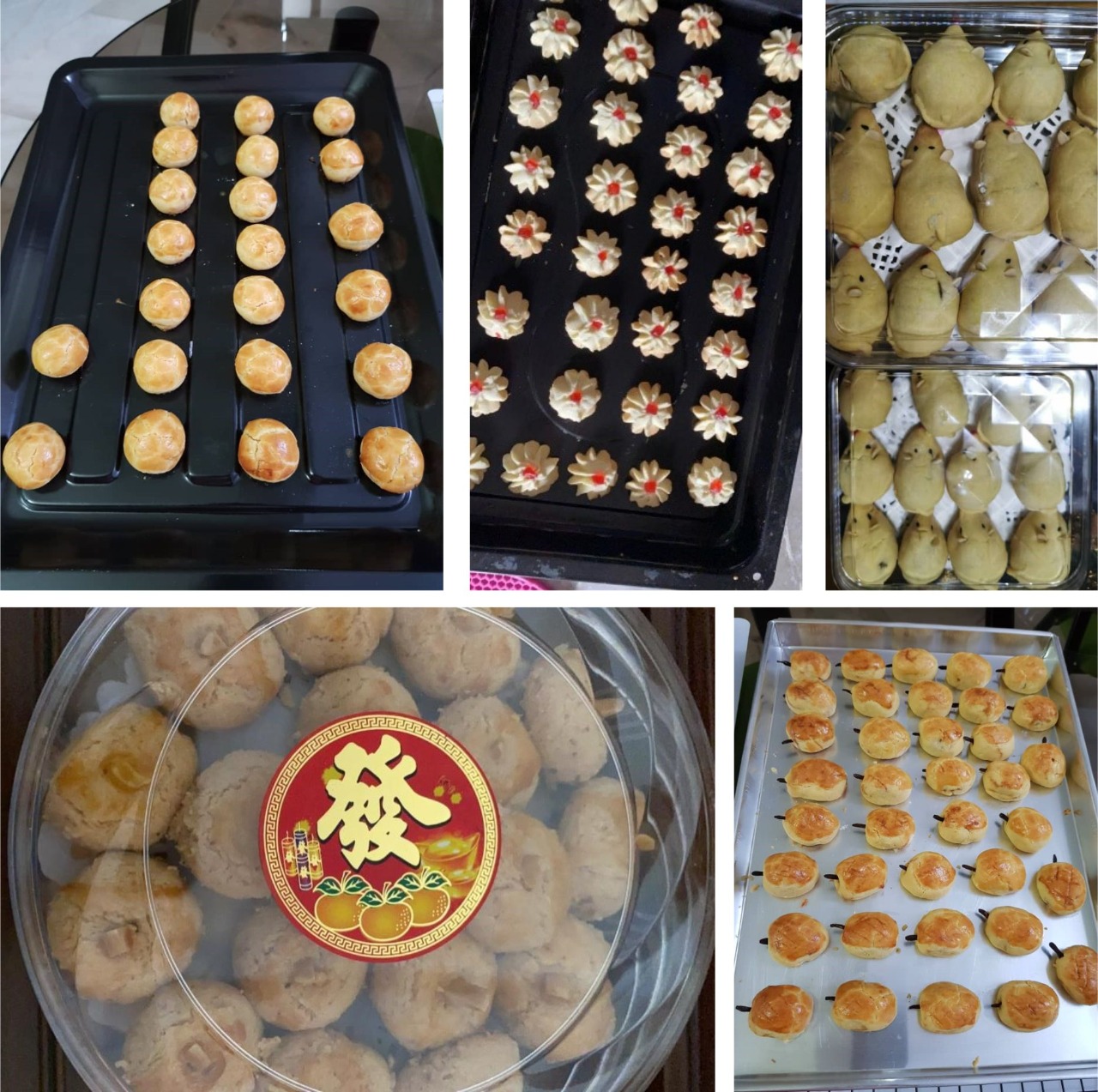
Some home baked biscuits for Chinese New Year
But the most looked forward to was making love letters.
It was an all-day event (feels like a picnic under a hot stove) that required the whole family to be involved with assigned duties; someone to ensure there was a continuous stream of burning charcoal in the stove, one person to continuously stir and top up the love letter batter with coconut milk before it gets clumpy and thick, another person responsible to prepare meals as we took turns to eat, two individuals to take care of five molds each as only the expert could handle ten at a time, with a person sitting on each side of them ready to fold the hot ready made love letters on a paper lined washing pail placed upside down which served as a table. They had to be fast before the love letters turn cold and not foldable, then keep them neatly in the lined Milo tins once the folded love letters have cooled down. The two individuals responsible for managing the molds were under constant pressure as the challenge was to minimize wastage. The love letters could be burnt or turn out with uneven colors if they do not constantly turn the molds under the hot charcoal stove and open the molds to check if the love letters inside were cooked. As in all things in life, all the five molds would usually be cooked at the same time posing a challenge to remove the love letters from the molds quickly before the rest gets burnt. We often flung them quickly to the person sitting next to us who was responsible for folding the love letters.
Even though it was hard work, we looked forward to the end of the day where we got to eat the crumbs which were the excess batter that spilled out from the sides of the mold. We had to use a knife to scrap it off. I missed those days because it was a simple way to bond as a family which we don’t do a lot anymore.
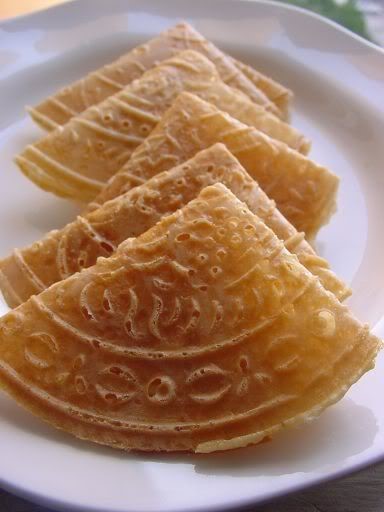
Love Letters
(Photo Credit: Annie Teoh tumblr)
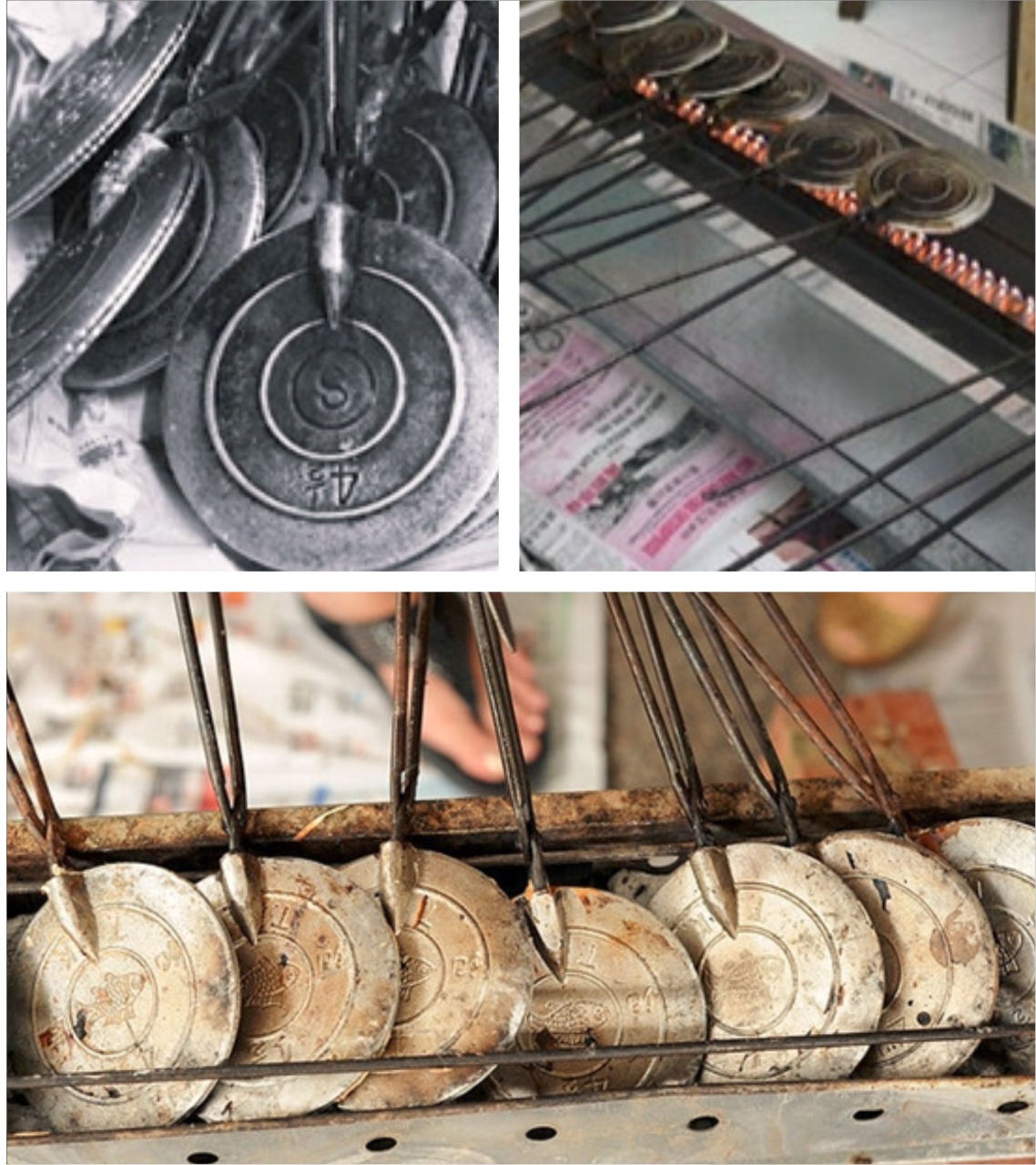
Love Letters' Mold & Stove
(Photo credit: travelling foodies.com)
Over the years when we were better off financially, my late dad who was a travelling salesman making outstation trips would drop by Telok Anson (now called Telok Intan where my late mother hailed from) and brought home the famous “heong peang” aka fragant biscuit. Today, Ipoh is well known for this biscuit and there are a variety of fillings including durian but I swear by the original maltose and shallots filling. The secret to eating this biscuit is to eat the flaky cover first followed by the thick sticky sweet fillings if you are those who believe in saving the best for last.

Heong Peang
Dad also introduced us to the famous Tapah (a small town north Perak about 49km from Ipoh) “kai chai peang” aka chicken biscuit which is made of spices and fermented bean curd. Not many like this biscuit as it is an acquired taste.

Original Chicken Biscuit
It also comes in the crispy version too.
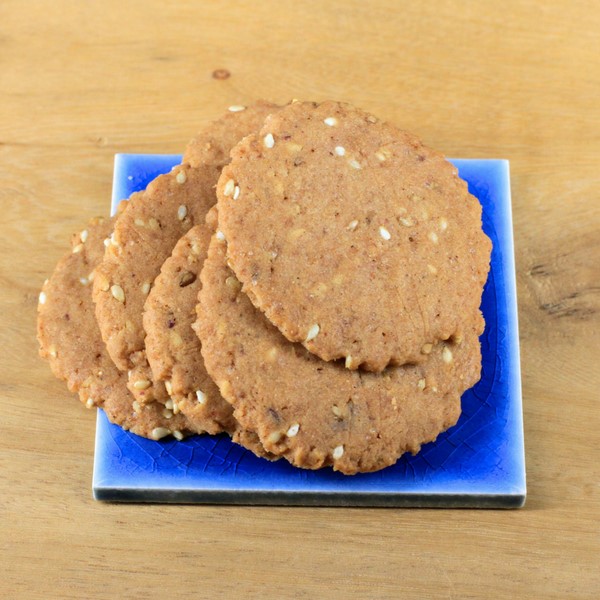
Crispy Chicken Biscuit
(Photo Credit: foodconnection.com.my)
With a sweet tooth which we all acquired due to regular exposure to sweet biscuits, dad brought home the ultimate “sek kay ma” a sticky biscuit laden with flour and sugar which he brought from a coffee shop in town. It is addictive once you start and I would not recommend if you do not want to have diabetes. But after every trip back to Ipoh, I always end up with 5 packets in the luggage to bring home.
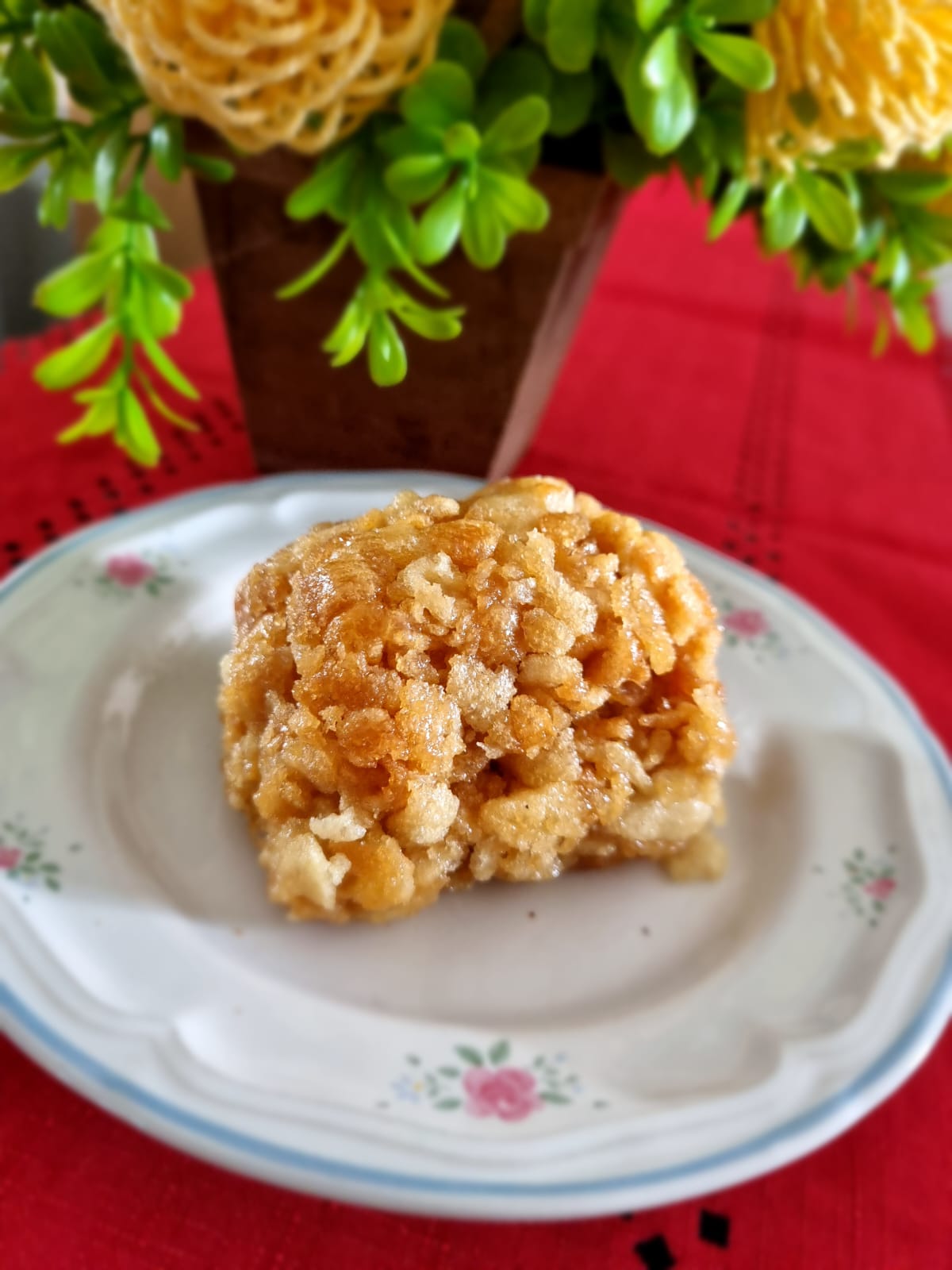
Sek Keh Ma
My childhood is filled with great memories of biscuits; mostly home-made. Besides my Biscuit Uncle, I found out that my late mum’s far off cousin used to make rice crackers during Chinese New Year. I tasted it only twice when I was a teenager. The well fried peanut and the freshness of the rice cracker have not left me and I have yet to find one that could match up to hers. I was jubilated when I found this in Kuala Lumpur recently as this biscuit is usually only available during Chinese New Year. It was too sweet and there was no fragrance to it unfortunately.

Rice Cracker
While I am open to calling biscuits cookies to keep up with times and lingo of the young; and perhaps calling biscuits sounded old fashioned and inferior, biscuits hold a lot of meaning and memories for me. It reminds me of my growing up years in Ipoh, my dad who introduced us to the world of biscuits, the Biscuit Uncle whom I believe would make it big if he had the foresight to commercialize his biscuits and the camaraderie of baking and cooking as a family.
In writing this blog, I decided to google the difference between biscuit and cookie to check if it is just semantics. I am glad I did. Extracted from Waterbridge.net:
The first difference between English biscuits and cookies is the way they are made. The word “cookie” originates from the Dutch word ‘Koekje’ meaning ‘little cake’. These little cakes were originally made to test the temperature of an oven before baking a real cake!
Much like cake, cookies are made from a soft, thick dough and are denser than an English biscuit. When they are finished, cookies are larger, softer, and chunkier than their biscuit cousins.
In contrast, the word “biscuit” comes from the Latin ‘bis’ (twice) and ‘coquere’ (cooked). It essentially means twice baked! More firm, thinner and fluffier than a cookie, biscuits require a harder dough to create the correct texture. These deliciously crumbly treats are usually made with only a few ingredients, butter, flour and sugar. This makes them the perfect dippable treat, as they absorb the rich flavours in coffee and tea!
Moving forward, I will proudly call my biscuit, biscuit and stop the pretentious name cookie.
Also, that is because I now know the difference between a biscuit and a cookie.
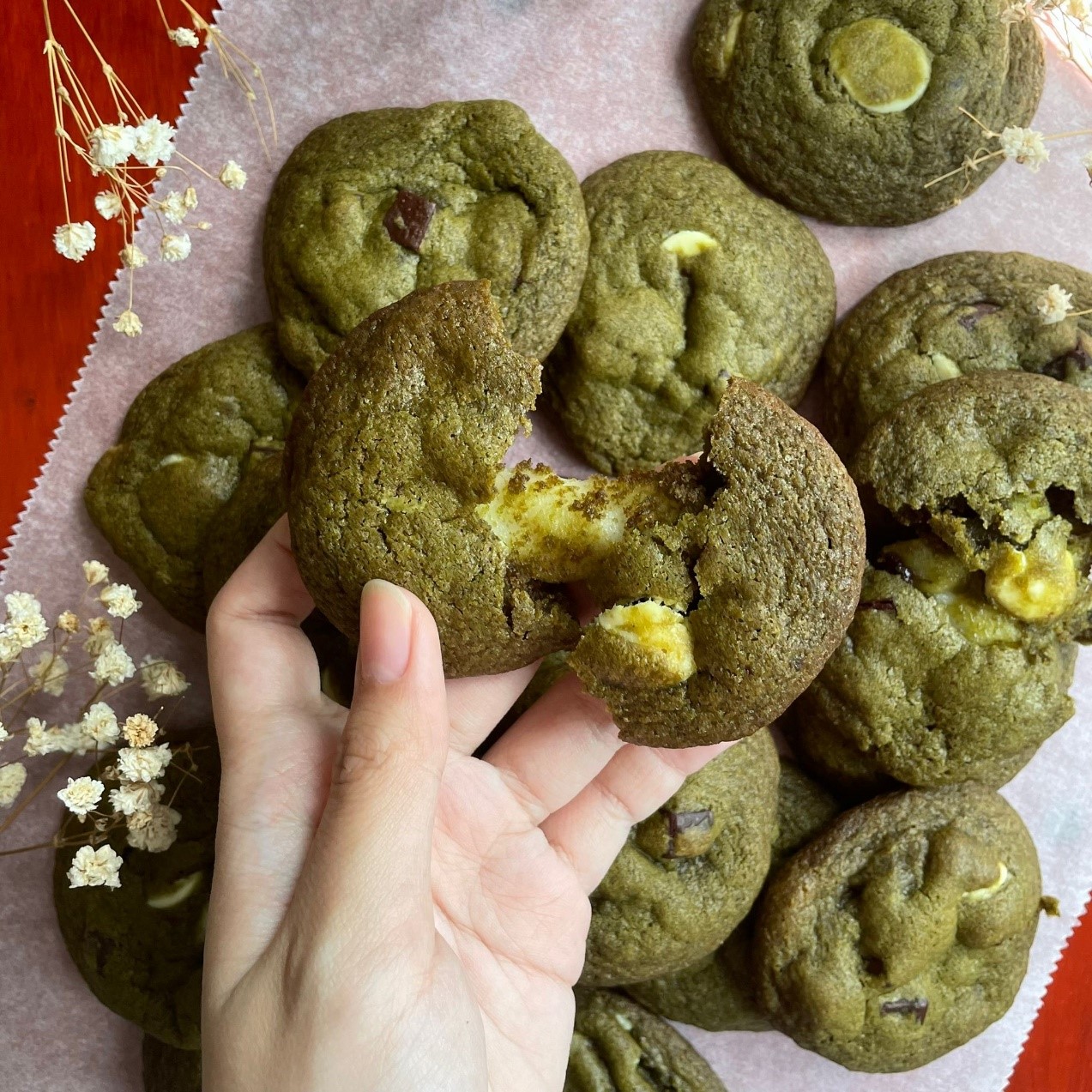
I grew up with biscuits. Cookie only came later when my kids were in their teens and brought this vocabulary home.
Biscuit was a rare commodity when we were young. We only get to eat Jacob “sor-ta-peang” aka cream crackers dipped into Milo when we were sick. It was somewhat an incentive and motivation for us to take our medication and get well. I don’t recall knowing any other types of biscuits until many years later.

Plain and sugar “sor ta peang” aka cream crackers
Up to this day, my family and I would instinctively reach out for cream crackers whenever we do not feel well. Even hospitals serve cream crackers as a snack for tea to their patients. Whoever invented cream crackers has certainly done an excellent job in marketing this biscuit which has withstood the onslaught of other biscuits and cookies in the market.
This humble cream crackers have also found its way to café, usually served with butter, kaya (coconut jam) or peanut butter. When I was travelling on long haul flights for work, I would request for cream crackers and have it with cheese just so that it matches the travel class I was in. It served as comfort food when I was sick of the frequent airlines’ food.
There are now more variety like the sugar-coated ones which is my son’s and my favorite, and brands to choose from.
It was always a happy occasion when our “Biscuit Uncle” who was my late dad’s cousin come riding on his motorbike to our home with samples of biscuits, usually near Chinese New Year. The aromatic smell of freshly baked biscuits would fill the living room as we try out the biscuits made by his wife to supplement their household income. My top choices were the cereal, orange and cherry biscuits. I always waited in trepidation as there were nine of us in the family and my choice was not always heard. Fortunately, these three flavors were also our family’s top choices and his best seller.

Photo of this cherry biscuit looks closest to my Biscuit Uncle’s cherry biscuit
(Photo Credit: Onthatile Kabelano on cookpad.com)
After I left home to further my studies in Singapore, I hardly had a chance to eat his biscuits but the taste of his biscuits continues to linger in my mind and no other similar biscuits could rival his. I had made a few attempts to trace my uncle to check if his wife was still baking and if not, if she could share the recipe with me. Sadly, my uncle has passed on; they had stopped baking for a while and his children could not be traced.
Motivated by my Biscuit Uncle’s home baked biscuits, baking our own biscuits for Chinese New Year became an annual affair. It started with keeping and cleaning all the empty Milo tins and lining them with tracing paper. We baked our own peanut biscuit, pineapple tarts, almond biscuit, kueh bangkit and many more variety.

Some home baked biscuits for Chinese New Year
But the most looked forward to was making love letters.
It was an all-day event (feels like a picnic under a hot stove) that required the whole family to be involved with assigned duties; someone to ensure there was a continuous stream of burning charcoal in the stove, one person to continuously stir and top up the love letter batter with coconut milk before it gets clumpy and thick, another person responsible to prepare meals as we took turns to eat, two individuals to take care of five molds each as only the expert could handle ten at a time, with a person sitting on each side of them ready to fold the hot ready made love letters on a paper lined washing pail placed upside down which served as a table. They had to be fast before the love letters turn cold and not foldable, then keep them neatly in the lined Milo tins once the folded love letters have cooled down. The two individuals responsible for managing the molds were under constant pressure as the challenge was to minimize wastage. The love letters could be burnt or turn out with uneven colors if they do not constantly turn the molds under the hot charcoal stove and open the molds to check if the love letters inside were cooked. As in all things in life, all the five molds would usually be cooked at the same time posing a challenge to remove the love letters from the molds quickly before the rest gets burnt. We often flung them quickly to the person sitting next to us who was responsible for folding the love letters.
Even though it was hard work, we looked forward to the end of the day where we got to eat the crumbs which were the excess batter that spilled out from the sides of the mold. We had to use a knife to scrap it off. I missed those days because it was a simple way to bond as a family which we don’t do a lot anymore.

Love Letters
(Photo Credit: Annie Teoh tumblr)

Love Letters' Mold & Stove
(Photo credit: travelling foodies.com)
Over the years when we were better off financially, my late dad who was a travelling salesman making outstation trips would drop by Telok Anson (now called Telok Intan where my late mother hailed from) and brought home the famous “heong peang” aka fragant biscuit. Today, Ipoh is well known for this biscuit and there are a variety of fillings including durian but I swear by the original maltose and shallots filling. The secret to eating this biscuit is to eat the flaky cover first followed by the thick sticky sweet fillings if you are those who believe in saving the best for last.

Heong Peang
Dad also introduced us to the famous Tapah (a small town north Perak about 49km from Ipoh) “kai chai peang” aka chicken biscuit which is made of spices and fermented bean curd. Not many like this biscuit as it is an acquired taste.

Original Chicken Biscuit
It also comes in the crispy version too.

Crispy Chicken Biscuit
(Photo Credit: foodconnection.com.my)
With a sweet tooth which we all acquired due to regular exposure to sweet biscuits, dad brought home the ultimate “sek kay ma” a sticky biscuit laden with flour and sugar which he brought from a coffee shop in town. It is addictive once you start and I would not recommend if you do not want to have diabetes. But after every trip back to Ipoh, I always end up with 5 packets in the luggage to bring home.

Sek Keh Ma
My childhood is filled with great memories of biscuits; mostly home-made. Besides my Biscuit Uncle, I found out that my late mum’s far off cousin used to make rice crackers during Chinese New Year. I tasted it only twice when I was a teenager. The well fried peanut and the freshness of the rice cracker have not left me and I have yet to find one that could match up to hers. I was jubilated when I found this in Kuala Lumpur recently as this biscuit is usually only available during Chinese New Year. It was too sweet and there was no fragrance to it unfortunately.

Rice Cracker
While I am open to calling biscuits cookies to keep up with times and lingo of the young; and perhaps calling biscuits sounded old fashioned and inferior, biscuits hold a lot of meaning and memories for me. It reminds me of my growing up years in Ipoh, my dad who introduced us to the world of biscuits, the Biscuit Uncle whom I believe would make it big if he had the foresight to commercialize his biscuits and the camaraderie of baking and cooking as a family.
In writing this blog, I decided to google the difference between biscuit and cookie to check if it is just semantics. I am glad I did. Extracted from Waterbridge.net:
The first difference between English biscuits and cookies is the way they are made. The word “cookie” originates from the Dutch word ‘Koekje’ meaning ‘little cake’. These little cakes were originally made to test the temperature of an oven before baking a real cake!
Much like cake, cookies are made from a soft, thick dough and are denser than an English biscuit. When they are finished, cookies are larger, softer, and chunkier than their biscuit cousins.
In contrast, the word “biscuit” comes from the Latin ‘bis’ (twice) and ‘coquere’ (cooked). It essentially means twice baked! More firm, thinner and fluffier than a cookie, biscuits require a harder dough to create the correct texture. These deliciously crumbly treats are usually made with only a few ingredients, butter, flour and sugar. This makes them the perfect dippable treat, as they absorb the rich flavours in coffee and tea!
Moving forward, I will proudly call my biscuit, biscuit and stop the pretentious name cookie.
Also, that is because I now know the difference between a biscuit and a cookie.

